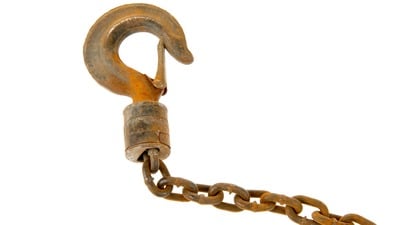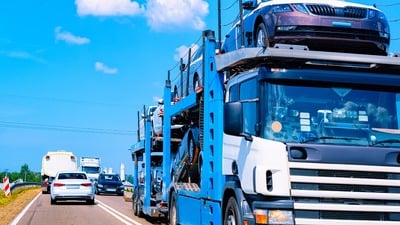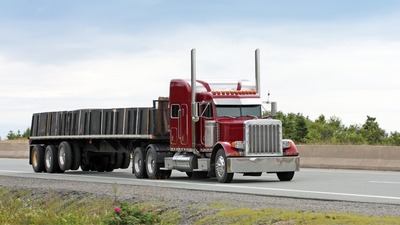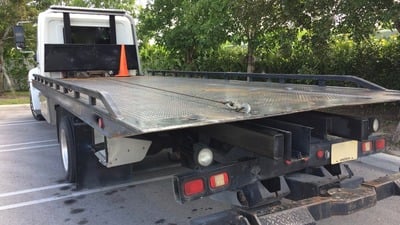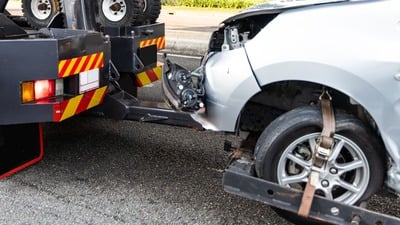Introduction to Recovery Hooks: What Are They?
Recovery hooks might sound fancy, but they're actually pretty straightforward tools that play a big role in roadside safety. So, what are they exactly? Simply put, recovery hooks are strong metal hooks attached to the frame of a vehicle. They're designed for one main purpose: to allow the vehicle to be safely towed or pulled out of trouble. Whether you're stuck in mud, trapped in a ditch, or have been in an accident and need your car moved to the side of the road, these hooks are the go-to solution. The idea behind them is simple – provide a secure point that can handle the stress and force needed to pull a heavy vehicle. It's a simple concept, but it makes a huge difference when it comes to safety and damage control in unlucky scenarios on the road. So next time you see those metal hooks on cars, you'll know they're not just there for show – they're a critical safety feature.
The Importance of Recovery Hooks in Vehicle Safety
Recovery hooks play a crucial role in vehicle safety, especially during accidents or when a vehicle gets stuck. These hooks are designed to provide a secure anchor point for towing or recovery operations, helping to move a damaged or immobile vehicle to a safe location. Let's break it down: when a car ends up in a ditch or is involved in a collision, the recovery process needs to be swift to ensure the safety of the occupants and to clear the road for other users. Recovery hooks allow for this fast response. They are built strong, often made of steel, and are attached to the frame of the vehicle. This means they can handle the pull and stress of recovery operations without causing further damage to the vehicle. Not all vehicles come with recovery hooks installed, but adding them is a wise safety measure. It's not just about having them; it's knowing they are there, ready to play their part in a moment of need, making them an indispensable tool for roadside safety and recovery efforts. So, whether you're an off-road enthusiast or just someone who values safety, recovery hooks are a simple addition that could make a significant difference in a risky situation.
Different Types of Recovery Hooks and Their Uses
Recovery hooks are crucial for towing or extracting vehicles after accidents or when stuck. Generally, there are two main types: closed-loop and open-hook. Closed-loop hooks, made of solid metal, offer more strength and security. They're the go-to for heavy-duty towing needs, ensuring the tow strap doesn’t slip off during the pull. Open-hook designs are more common and versatile but offer less security since the strap might slip off if not properly fastened. These are suitable for lighter, less strenuous recoveries. When selecting a recovery hook, consider the vehicle's size and the recovery situation's complexity. Remember, the right recovery hook not just makes the process safer but also prevents further damage to the vehicle.
How Recovery Hooks Can Prevent Accidents
Recovery hooks might seem like a small detail when it comes to vehicle safety, but they play a big role in preventing accidents, especially in less-than-ideal driving conditions. Picture this: you're driving on a slippery road, and your car starts to skid. If you've got recovery hooks installed, another vehicle can quickly and safely pull you to stability before things get worse. It's not just about getting unstuck from mud or snow. In heavy traffic situations, a car that's immobilized is a hazard to everyone else on the road. By allowing for a rapid response, recovery hooks help keep the flow of traffic moving, reducing the risk of pile-ups caused by sudden stops or attempts to avoid the stranded vehicle. Think of them as a helping hand, always there to pull you out of trouble.
Installing Recovery Hooks: A Step-by-Step Guide
First off, grab the recovery hook kit and make sure you've got all the tools you'll need: a wrench, a socket set, and safety gloves. Safety first, always wear your gloves to protect your hands. Step one, locate the pre-drilled holes in your vehicle's frame. These are there for recovery hooks or tow hooks. If you can't find any, check your vehicle's manual—it's your best friend in this job. Next, take the recovery hook and align it with the holes. Grab the bolts that came with your kit and thread them through the hook into the frame. Here's where your socket set comes in handy. Tighten the bolts but don’t go Hulk on them; firm and secure is what we're aiming for. Double-check your work. Make sure the hook is stable and won't budge. There's no room for half-measures when it comes to safety. And just like that, you've installed a recovery hook! This simple addition to your vehicle is a big step in enhancing road safety for you and others. Remember, in the event of an accident, a properly installed recovery hook can be a lifeline.
The Role of Recovery Hooks in Accident Scenarios
When you're in a jam because your vehicle's stuck or you've been in an accident, recovery hooks play a crucial role in getting you out safely. These hooks, often found on trucks and SUVs, are designed to be solid and durable, offering a secure point to attach cables or chains for towing. In accident scenarios, especially off-road, recovery hooks can be the difference between a quick save and waiting hours for help. They allow another vehicle to pull the stuck or damaged car with minimal risk of further damage. Not just any hook will do; it's essential they're made from high-quality material and properly attached to the vehicle's frame. This ensures they won't snap under pressure, keeping everyone involved safe during recovery efforts. So, having recovery hooks can be a real lifesaver, turning a potential disaster into a manageable situation.
Best Practices for Using Recovery Hooks Safely
Before diving into the mechanics, it's essential to grasp what recovery hooks are. They're sturdy metal hooks attached to a vehicle's frame, offering a safe point of attachment for towing or being towed. Now, when you find yourself in a scenario needing their use, remember these guidelines to ensure safety: First, always inspect the recovery hook before use. Look for any signs of wear, corrosion, or damage. Ignoring this can lead to failure under stress, risking further damage or injury. Next, use the right equipment. Pair your recovery hooks with a rated shackle and a proper recovery strap. Don't improvise with makeshift solutions; the risk isn't worth it. When it's time to connect, never stand between the vehicles during the hook-up. Sudden movements can cause injury if you're caught in the wrong place. Also, clear the area. Make sure bystanders are at a safe distance. Recovery operations can be unpredictable, and ensuring everyone's safety is paramount. After securing connections, proceed with caution. Start with gentle tugs to ensure everything holds under stress. Avoid sudden jerks or excessive force. Steady and controlled movements are key. Once done, disconnect carefully, again ensuring no one is in harm's way and storing equipment appropriately. Remember, recovery hooks are there to get you out of a bind, not into another. Use them wisely.
Recovery Hook Maintenance: Ensuring They're Always Ready
Keeping your recovery hooks in top condition isn't just about ticking off a box on your vehicle maintenance list; it's about ensuring they're ready to perform when you really need them. First off, always check if the hooks are properly attached to your vehicle. A loose hook can spell disaster in an emergency. Secondly, rust is the enemy. Periodically, give those hooks a good look-over. Rust can weaken them significantly, so if you spot any, it’s time to take action. You can either remove the rust yourself with some sandpaper and paint or get a professional to do it. Another thing is to routinely check for any signs of wear and tear. This includes cracks or bends in the metal. If your recovery hook looks worn out, replace it. Don't take chances. Lastly, always make sure they're the right fit for your vehicle and the potential situations you might encounter. Different scenarios require different strengths. In simple terms, looking after your recovery hooks means they’ll look after you when the time comes. Quick checks and regular maintenance can be the difference between an easy recovery and a call for yet another tow truck. Keep them clean, check them regularly, and you’ll be setting yourself up for safer journeys.
Real-Life Stories: How Recovery Hooks Saved Lives
In the thick of things, when accidents shake up the peace of a regular day, recovery hooks stand as unsung heroes. Picture this: a car veers off a slippery road in heavy rain and ends up in a ditch. Panic sets in, but luckily, another vehicle equipped with a sturdy recovery hook is nearby. They attach the hook to the stranded car, gradually pulling it back to safety. It’s not just about moving metal; it’s about saving the people inside. There's the case of a family on a holiday trip. Driving through winding mountain paths, their SUV unexpectedly skids, teetering on the edge of a steep drop. Heartbeats spike, breaths held in fear. Enter a tow truck, its recovery hook ready. With precision, the driver hooks onto the SUV, easing it away from danger. These stories aren't rare. Drivers, off-road adventurers, and emergency responders share countless tales where recovery hooks turned potential tragedies into sighs of relief. Beyond their sturdy build, it's the prompt action and presence of mind of those at the scene that truly make the difference. Recovery hooks? More like lifelines.
Conclusion: Making Recovery Hooks a Part of Your Safety Kit
Wrapping this up, recovery hooks should be a no-brainer for your safety kit, especially if you're hitting off-road paths or just want to be prepared for any road mishap. They're not just metal hooks; they are your ticket to a quicker and safer rescue operation. Whether it's pulling your vehicle out of a ditch or helping another in distress, these tools are invaluable. Remember, it's not about if you'll ever need them, it's about being ready when you do. Investing in a quality recovery hook is investing in peace of mind. Let's make the roads safer, one hook at a time.

